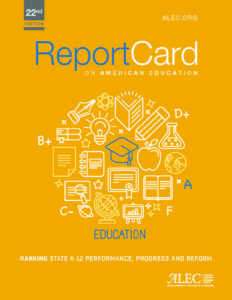
Federal cash is coming for Michigan schools — we need to use it fairly and smartly: Ben DeGrow
Michigan schools will soon be able to tap into extra money from Congress to address the fallout from the COVID-19 pandemic. As these funds become available, state officials should focus as much as possible on the needs of students without regard to what kind of school they attend.
The federal CARES Act, signed into law on March 27, opens up two new streams of emergency funding for public schools across the nation. As of April 14, state leaders are able to start applying for the first stream: Governor’s Emergency Education Relief Fund Grants. The $89.4 million Michigan is now able to apply for can be split up among K-12 and higher education needs, but the law gives state leaders a great deal of flexibility in how the funds are doled out. They should take advantage of that flexibility to address some of the educational needs that the new distance learning plans from Michigan’s schools may miss.
A share of the federal grant dollars should be set aside to offer scholarships to young learners who were already a year behind on their latest reading assessment. Florida’s Reading Scholarship Accounts provide a model, allowing families to direct the funds for tutoring services, curriculum materials or summer school programs that suit their student’s needs. These funds, administered through a nonprofit organization, could underwrite more in-person learning options that will be safely available in future months.
Gov. Gretchen Whitmer’s April 2 executive order suspended a newly implemented requirement designed to give extra help to students who aren’t reading proficiently by the end of third grade. Even if schools are operating under less-than-ideal circumstances, the state should focus on helping those students who are not ready to advance to the next grade.
State leaders also should strongly consider students who attend nonpublic schools for a share of these resources. Tuition relief that allows more private schools to remain open would not only give these students greater continuity in their learning but also ease the state’s fiscal strain by limiting the number of transfers into the public system.
As of 2017, there were 112,000 students enrolled in Michigan’s private schools. At the current minimum foundation allowance rate of $8,111 per student, the state treasury would have to pay an extra $90.8 million if those students were to transfer in, more than is available through the relief grants. The state would also be responsible for additional costs that may be associated with educating that influx of students.
Funds from the Governor’s Relief Fund Grants could also be used for other purposes, including helping to defray the costs for 12th-graders who may need remedial education as they move on to college in the fall and find they fell through the cracks of their district’s distance learning program.
The larger K-12 funding stream of the CARES Act will come from a $13.5 billion relief fund, of which Michigan will likely receive about $390 million. At least $350 million of that must pass through the state education department to local districts and public charter schools, based on how much a school already receives from the Title I federal poverty funding formula.
Public district and charter schools that serve larger concentrations of low-income students will benefit most from this federal cash infusion. While some portion of these funds may be put to effective use now, schools would do well to set aside money to shore up gaps in state funding in next year’s budget. In other words, hold the line on spending right now and repurpose fuel and utilities funds as buildings go largely unused. They should save as much money as possible for next year, when less state money is likely to be available as Michigan recovers from an economic collapse.
It’s too soon to know the extent of the fiscal impacts from the various shutdowns designed to slow the spread of the COVID-19 coronavirus. But reduced employment and economic activity mean the state is bringing in significantly less income and sales tax, which together cover two-thirds of the state’s School Aid Fund, on which many districts and all charter schools heavily depend.
An influx of federal funds is coming to the state. It’s incumbent on state officials to take a broad and flexible approach to meet students’ needs, while local officials do their best to save for future expenses.
Ben DeGrow is the Mackinac Center’s director of education policy. This column originally appeared at the Mackinac Center.



